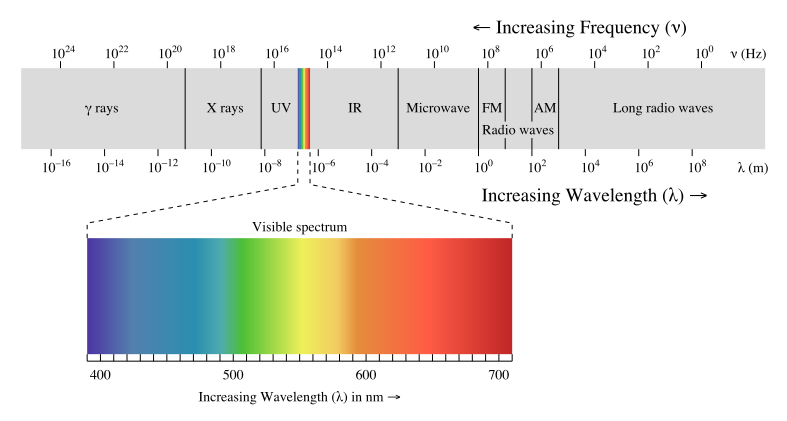The Color Spectrum – and The Colors of Light
Today we can understand the colors of light and the color spectrum, through Isaac Newton’s fascination with the behavior of sunlight passing through a prism,
Isaac Newton set up an experiment in 1666, using a hole in a window shade to admit a ray of daylight into a darkened room, where a glass prism was placed so that the ray would pass through it.
| On doing this, the ray of light was refracted (bent) on traveling through the prism and emerged as a spreading beam of multicolored light, the colors of the rainbow and in the same order, were seen on the white wall beyond. |  |
| Picture Above – Newton’s experiment showing a ray of light traveling through a prism, being refracted and emerging as a spreading beam of multi-colored light. | |
From these observations of light emerging from a prism, Newton concluded that white sunlight was a mixture of different types of light, with each being of a single pure color and that each color was refracted (bent) at different degrees, violet by the most and red by the least.
Picture Above – The Electromagnetic Spectrum
These colors he identified as Red, Orange, Yellow, Green, Blue, Indigo and Violet.
Each hue is today thought to correspond to a portion of the range of wavelengths of radiant energy that can be distinguished by the human eye. What we can see is called the visible spectrum.
This is only a tiny portion of the electromagnetic spectrum, which ranges from high energy x – rays to low energy radio waves. At either end of this visible spectrum is white and black. White we now know from Newton, reflects and contains all the other colors within it, and black absorbs all the light.
In continuing to experiment, he found that by introducing a converging lens after the prism, the lens would mix the colors and white light was achieved once more.
Newton experimented further to block out some colors and recombining others, creating colored mixtures of light. These colors were quite different from any found in the naturally occurring spectrum.

The major discovery was that the color of everything in Nature depends on the type of light it sends to the eye. This also depends on the individual colors of the light that the surface of the object reflects, absorbs or transmits and the nature of the light falling on the object.
The balance of spectral colors that produce specific hues is complex and can be stated in the form of tables of numbers or displayed as a graph, stating the proportions of light each spectral color reflects.
Generalizing, if a surface looks strongly colored when viewed in white light it is reflecting certain colors and absorbing others. We view a red Ferrari on the street; it has absorbed all forms of light except the red, which it is reflecting back to us to tell us that it is in fact red.
Find More Knowledge on Color
Free Color Course
Color Articles
Color Information
Color Meanings
Color Schemes
Color Theory
Paint
Popular Color Schemes
Taking Color a Step Further
If you want to learn about Color for Interiors why not register for your free Color Course. This will guide you through the topics we cover in color for interiors. The great advantage is, it is emailed to you and you then use this website as your learning resource. We have been providing courses online for over 16 years now. Join many of the other happy readers who have changed the way they now look at interior design. Please take a moment and enroll in our free color course.
If you have some knowledge of color or have already completed interiordezine.com’s Color Course, then you can take yourself to the next learning level. Visit WillowCollege.com, new courses are now available which provide you with everything you need to know about color for interior design and more. Have fun!
There are 4 courses available


